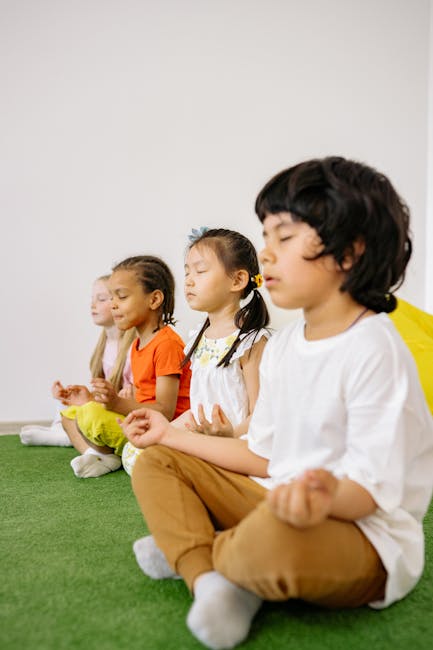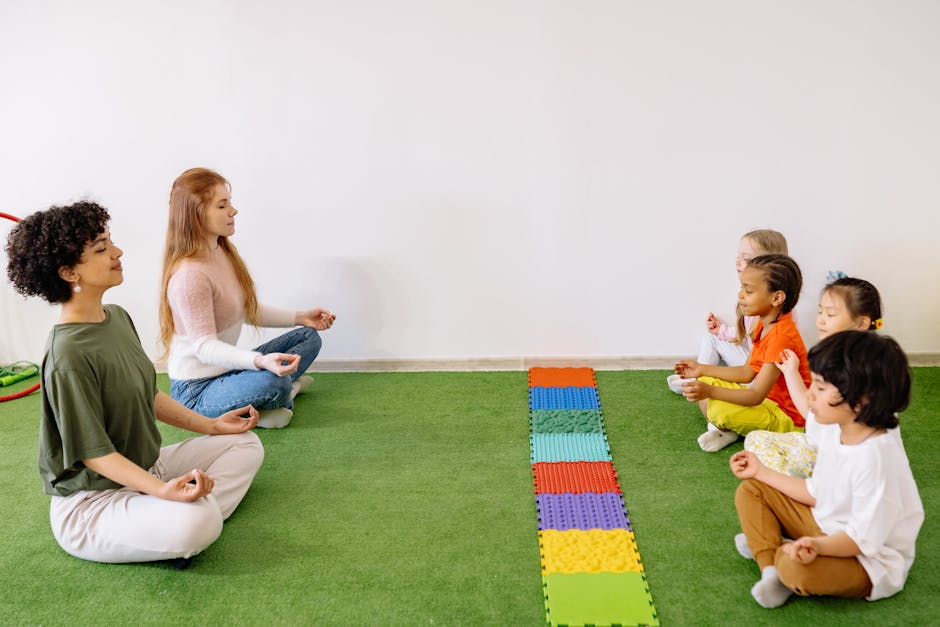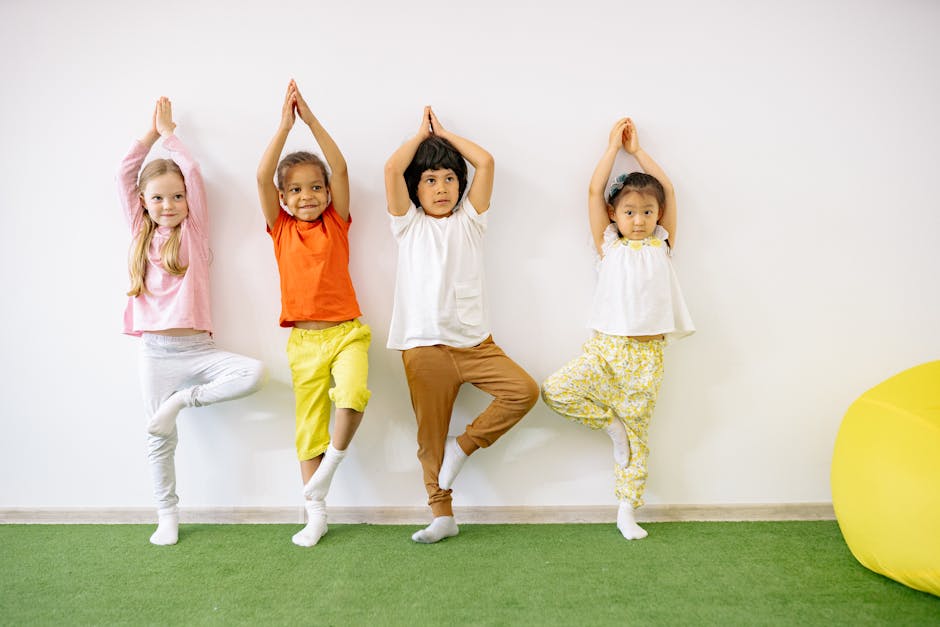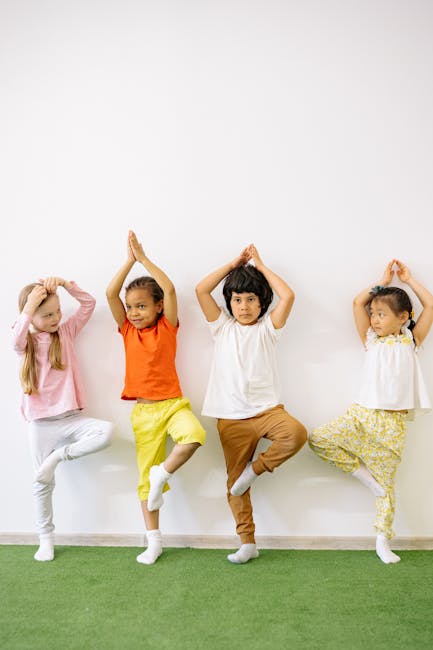How Does Mindful Play Contribute To Cultivating Joy?
Mindful play is like a secret ingredient for happiness—it helps us slow down, savor the moment, and rediscover the simple joys of life.
In a world that often feels like a never-ending race, mindful play reminds us to pause, breathe, and embrace the present.
But how exactly does it work? And why should you care? Stick around to uncover how this playful practice can transform your daily life into a more joyful and fulfilling experience.
Key Takeaways
- Mindful play involves being fully present and engaged in playful activities.
- It fosters creativity, reduces stress, and strengthens social connections.
- Incorporating mindful play into daily routines can enhance emotional well-being and cultivate lasting joy.
Introduction to Mindful Play
Definition of Mindful Play
Mindful play is all about immersing yourself in the moment while engaging in playful activities.
It’s not just about having fun—it’s about being fully present, whether you’re painting, playing a game, or simply tossing a ball around.
Think of it as a blend of mindfulness and playfulness, where the focus is on the experience rather than the outcome.
Importance of Mindfulness in Daily Life
Mindfulness helps us step off the hamster wheel of stress and overthinking.
It’s like hitting the pause button on life to notice the little things—a child’s laughter, the rustle of leaves, or even the texture of your favorite snack.
When combined with play, mindfulness becomes a powerful tool for cultivating joy and emotional well-being.
If you’re curious about how mindfulness can improve your emotional health, check out this guide on noticing simple joys (source).
Connection Between Play and Joy
Play is a universal language of joy.
It sparks creativity, strengthens bonds, and reminds us of the carefree days of childhood.
When approached mindfully, play becomes a gateway to deeper happiness, helping us reconnect with our inner child and the world around us.

The Role of Mindful Play in Fostering Joy
Engaging Fully in the Present Moment
Awareness of Surroundings
Mindful play encourages us to notice the details—the colors of a puzzle, the sound of laughter, or the feel of clay in our hands.
This heightened awareness helps us appreciate the beauty in everyday moments.
Letting Go of Distractions
In a world buzzing with notifications, mindful play is a breath of fresh air.
It invites us to set aside our phones, worries, and to-do lists, allowing us to focus solely on the joy of the activity.
Stimulating Creativity and Reducing Stress
Encouraging Imagination
Whether it’s building a sandcastle or doodling on paper, mindful play unlocks our creative potential.
It’s a chance to think outside the box and explore new ideas without fear of judgment.
Stress Relief Through Play
Play isn’t just for kids—it’s a stress-buster for adults too!
Activities like gardening, painting, or even playing catch can lower cortisol levels and boost mood.
For more on how physical activity can uplift your spirits, explore this article on cultivating joy through movement (source).

Enhancing Awareness Through Mindful Play
Recognizing Simple Joys in Life
Mindful play teaches us to find happiness in the little things—a splash of water, a burst of laughter, or the warmth of the sun.
It’s a reminder that joy doesn’t always come from grand gestures but often from the simplest moments.
Reconnecting with the Senses
Experiencing the World Through Touch, Sight, and Sound
Mindful play engages our senses, making us more attuned to the world around us.
Whether it’s the crunch of leaves underfoot or the vibrant colors of a painting, these sensory experiences ground us in the present.
Grounding Exercises in Play
Activities like yoga, dancing, or even finger painting can serve as grounding exercises, helping us feel more connected to our bodies and surroundings.

Social Benefits of Mindful Play
Encouraging Social Interaction
Building Relationships Through Shared Activities
Playing together fosters connection, whether it’s a board game with family or a team sport with friends.
These shared moments create bonds that bring lasting joy.
Sharing Joy with Others
Joy is contagious!
When we laugh and play with others, we spread happiness and strengthen our relationships.
Strengthening Community Bonds
Mindful play can also bring communities together, creating a sense of belonging and shared purpose.
For more ideas on finding joy in everyday life, check out this resource (source).

Mindful Play as a Form of Self-Care
Recharging Amidst Daily Challenges
Life can be overwhelming, but mindful play offers a chance to recharge and reset.
It’s like a mini-vacation for your mind, helping you return to your tasks with renewed energy.
Creating a Routine for Joy
Prioritizing Play in Daily Life
Make time for play, even if it’s just a few minutes a day.
It could be as simple as doodling, playing with a pet, or trying a new hobby.
Balancing Responsibilities with Leisure
Mindful play doesn’t mean neglecting your responsibilities—it’s about finding a balance that allows you to enjoy life while staying productive.
For tips on balancing mindfulness and daily life, explore this article (source).

Accessibility of Mindful Play
Various Forms of Mindful Play
Outdoor Activities
Nature walks, gardening, or even cloud-watching can be forms of mindful play.
These activities connect us with the natural world and offer a sense of peace.
Creative Arts and Hobbies
Painting, knitting, or playing an instrument are excellent ways to engage in mindful play.
They allow us to express ourselves while staying present in the moment.
Making Mindful Play Inclusive for All Ages
Mindful play isn’t just for kids—it’s for everyone!
From toddlers to seniors, anyone can benefit from the joy and relaxation it brings.
Long-Term Impact of Mindful Play on Quality of Life
Cultivating a Positive and Open Heart
Mindful play helps us approach life with curiosity and kindness, fostering a more positive outlook.
Appreciating Small Moments of Joy
By practicing mindful play, we learn to cherish the little things, making every day feel more meaningful.
Building a Fulfilling and Joyful Life
Incorporating mindful play into our routines can lead to a happier, more balanced life.
For more inspiration, explore this article on finding joy through mindfulness (source).

Conclusion
Summary of the Benefits of Mindful Play
Mindful play is more than just fun—it’s a pathway to joy, creativity, and connection.
It helps us stay present, reduce stress, and build stronger relationships, all while making life a little brighter.
Encouragement to Incorporate Mindful Play into Daily Life
So why not give it a try?
Whether it’s a game, a craft, or a walk in the park, mindful play can transform your day and, over time, your life.
Start small, stay present, and let the joy unfold!
FAQ: How Mindful Play Sparks Joy and Enriches Life
What is mindful play?
Mindful play involves engaging in activities with full attention and presence, focusing on the experience rather than the outcome. It encourages creativity, relaxation, and a deeper connection with oneself and others.
How does mindful play differ from regular play?
Unlike regular play, which can sometimes be rushed or goal-oriented, mindful play emphasizes being fully present in the moment. It’s about enjoying the process without judgment or distraction, fostering a sense of calm and joy.
What are the benefits of mindful play for adults?
Mindful play helps adults reduce stress, improve focus, and boost creativity. It also nurtures emotional well-being by encouraging self-expression and fostering a sense of joy and fulfillment.
Can children benefit from mindful play too?
Absolutely! Mindful play helps children develop emotional regulation, focus, and social skills. It also encourages imagination and resilience, laying a strong foundation for their mental and emotional growth.
What are some examples of mindful play activities?
Examples include drawing, building with blocks, playing with clay, engaging in nature walks, or even playing board games with full attention. The key is to stay present and enjoy the activity without rushing or multitasking.
How does mindful play contribute to cultivating joy?
Mindful play allows individuals to reconnect with their inner child, fostering a sense of wonder and happiness. By being fully present, it helps release stress and creates moments of pure enjoyment and gratitude.
Is mindful play suitable for group settings?
Yes, mindful play in groups can strengthen relationships and build trust. Activities like cooperative games or shared creative projects encourage connection and shared joy, enhancing social bonds.
How can I incorporate mindful play into a busy schedule?
Start small by dedicating 10-15 minutes daily to an activity you enjoy. Focus on being present and fully immersed in the moment. Gradually, you can expand this practice to include more activities or longer durations.
Can mindful play improve mental health?
Yes, mindful play can significantly improve mental health by reducing anxiety and depression. It promotes relaxation, enhances self-awareness, and provides a healthy outlet for emotions, contributing to overall well-being.
Are there any tools or resources to help with mindful play?
Yes, tools like mindfulness apps, guided activity books, or even simple items like art supplies or puzzles can support mindful play. The most important resource, however, is your willingness to be present and enjoy the moment.



